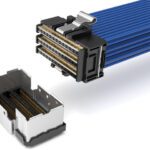A Technical Comparison of Membrane and Capacitive Switches for Medical Equipment
By Anthony J. Kalaijakis, Strategic Medical Marketing Manager, Molex Incorporated and
Steve Fulton, Engineering Manager for the Switch Products Business Unit Molex Incorporated
Aug. 21, 2012
Medical equipment applications each bring a unique set of design challenges. In addition to product safety, performance, and reliability, device designers must consider operating environment (e.g., hospital, diagnostic lab, or home), biocompatibility, intuitive operation, resistance to sterilization, and cycle-life durability. User-interface technologies are an important feature to ensure functionality and product marketability. Selection of membrane and capacitive technologies warrants addressing a number of technical considerations:
- Merits and trade-offs associated with circuit types (PC boards, flexible circuits, etc.)
- Optimal trace routing for ESD (electrostatic discharge) protection
- Power requirements and thermal management for circuitry, LEDs, and other options
- Matching the most appropriate substrate and options to a given application
Membrane switches
Membrane switches offer a lightweight, economical option for integrating user interfaces and electronic components into medical devices. They not only provide an excellent value-to-performance ratio, but are rugged, easy to clean, and intuitive to use. Ideal for touchpad applications, low-profile control panel assemblies can combine the switch contact system and custom electronics into a single package, eliminating the need for an additional motherboard or display board.
Standard membranes are simple designs composed of thin, micro-motion assemblies, with one or more layers of silver or carbon conductors printed on polyester substrate layers. Pressure-sensitive adhesives bond the layers together. Molex advanced manufacturing capabilities enable printed double-sided silver circuits that produce the equivalent of multi-layer PCBs, or that eliminate printed “crossovers” for environmentally exposed applications.
Custom membrane switch assemblies can integrate LEDs and other electronic components—such as photo diodes, resistors, and capacitors—connected to the membrane-switch substrate using conductive epoxy technology. For added functionality, more sophisticated applications integrate copper flex circuits and PCB assemblies, LCDs, plastic housings or metal backers, and lenses. Membrane options include non-tactile smooth surfaces, poly-domes, and silicone rubber keypads with carbon or gold contacts.
Metal dome or embossed arrays offer easily integrated low-cost contact systems that still allow custom contact configurations. Tactile metal domes are frequently used to provide the mechanical “snap” and audible sound when a switch is user-actuated. Durable and economical stainless steel snap-dome arrays for membrane switches are produced through a high-speed stamping process, with auto-placement on the membrane to ensure reliability and consistent user response.
Cosmetically appealing rubber membrane keypad assemblies increase switch travel and tactile feedback for more desirable aesthetics and user experience. Rubber blends the reliability of a membrane or PCB-substrate switch, with the 3D appearance and tactile feel of a silicone rubber keypad. Rubber keypads can utilize a range of contact systems, from carbon pills to gold pills, and actuating metal domes in a membrane-switch assembly.
There are various methods for mounting the rubber actuator to the switch. One simple method is to use a double-sided, pressure-sensitive silicone rubber adhesive. An innovative new method uses a simple protrusion molded into the rubber, which is then pulled through a PCB substrate, where an interference fit secures the rubber component to the assembly. Rubber switch options include patented Molex rocker switches, hard keycaps, and IMD (in-mold decorating).
Embedded LEDs
Tactile and non-tactile membrane switches can be converted to bonded LED assemblies by adding light-emitting diodes (LEDs). Embedded LEDs for backlighting and status indication may feature embossed windows for enhanced viewing angles and fully automated component bonding. LED/display flex assemblies allow flexible mounting configurations and multiple circuit substrate options—enabling a single interconnect solution that is smaller, thinner, lighter, and highly reliable.
LED-display assemblies can improve manufacturing assembly processes with reduced EMI and enhanced cosmetic options. An LED assembly on the top surface of a user interface produces a wider viewing angle, improved brightness, decreased light bleed, and easier assembly. Value can be found by creating a single LED assembly to replace light pipes or bulky and costly wire harnesses. Display assemblies may be designed with multiple indicators, and combined with switches, backers, seven-segment LED-displays, LCDs, and other components to expand display performance and functionality.
High-speed SMT processes and bonding technologies can be used to more economically apply LEDs to flex circuits. Silver printed circuits on polyester cannot handle soldering temperatures, so Molex began using anisotropic (Z-axis) conductive adhesives, subsequently developing a fully conductive epoxy to accommodate the high-speed SMT lines.
Capacitive switches
Capacitive sensing technology uses embedded circuitry to create an electrical field able to detect the presence of a human finger or other conducting object entering its field. The product recognizes a change in capacitance, and actuation occurs in response to user input; more specifically, the body’s innate conductivity. Advanced capacitive-switch configurations incorporate both membrane and capacitive circuits, effectively providing the best of both technologies.
A remarkably efficient user interface incorporating solid-state construction and circuitry, advanced capacitive technology provides greater reliability than mechanical counterparts. Embedded technology enables the capacitive touch screen. There are no moving parts to wear out or detract from product performance. A single capacitive assembly can replace dozens of mechanical switches and controls. Touch screen controllers reduce power consumption, improve accuracy, and require less frequent recalibration.
Touchpad user interfaces can be built on PCBs with substrate options such as rigid FR4, flexible polyimide, and flexible polyester for multidimensional designs. Sealed capacitive switches are highly resistant to moisture, dust, harsh chemical exposure, contaminants and EMI, making them exceptionally durable in demanding medical equipment applications. Touch screens feature an easy-to-read, light-enabled surface that’s easy to clean. Available in virtually any non-conductive material, overlays offer a variety of cosmetic surfaces, such as glass, polycarbonate, polyester, leather, wood, or acrylic.
 |
A single capacitive assembly can replace dozens of mechanical switches and controls. Touchscreen controllers reduce power consumption, improve accuracy and require less frequent recalibration. |
A versatile medium to create elegant or otherwise aesthetically pleasing effects, the capacitive interface supports extensive layout customization with switch buttons, rotary wheels, linear sliders, and track pads, as well as combinations of tactile and non-tactile input styles, with adjustable input for light touch or heavy touch. Integrated motion and fluid sensing can add application functionality. Haptic, or tactile, vibration, feedback, and proximity sensing are optional functional elements.
Capacitive touchpads allow more creative and functional use of light than membrane switches. The capacitive field senses at a distance great enough to accommodate the insertion of lighting elements and a light guide, which allows optimal design flexibility. There are virtually unlimited cosmetic and LED backlighting options for any icon or display shape, size and color. Active option keys may remain lit constantly. Keys can light on depression. Accidental activation of capacitive switches can be addressed by changing key sensitivity or time required to depress a key before actuation occurs.
In designs that don’t require lighting elements, solid state capacitive panels can be constructed with an overlay of continuous sheet metal. Sheet metal requires more pressure to activate keys but affords greater protection against accidental activation and water spills or other unintentional contact. The technology can incorporate Braille or number keypad locators, and allows use with any type of glove.
Switch selection
Engineers are constantly challenged to deploy differentiating leading-edge switch electronics that can demonstrably improve patient care in a cost-effective manner in diagnostic labs, hospitals, and clinics, as well as in portable medical support devices used by consumers. Mechanical membrane switches and feature-rich capacitive user interfaces are used in a wide range of medical equipment and devices: defibrillators, EKG leads, electronic sensors, glucose meters, infusion pumps, patient monitors, and portable oxygen units, as well as disposable dental, medical, and surgical equipment.
Visit Molex online.
Contact Molex at:
2222 Wellington Court
Lisle, IL 60532-1682
Tel: 1 800-78MOLEX
Outside USA (1) 630-969-4550
Fax: (1) 630-968-8356
Tlx: 254069
E-mail: [email protected]





